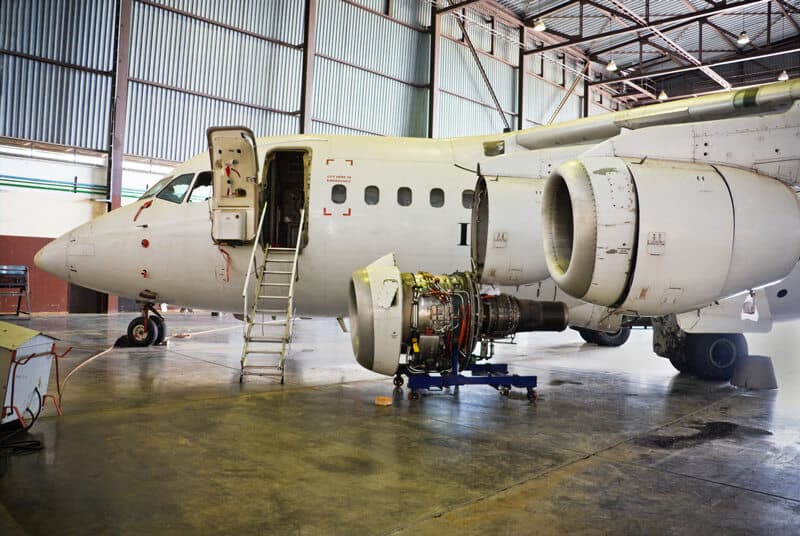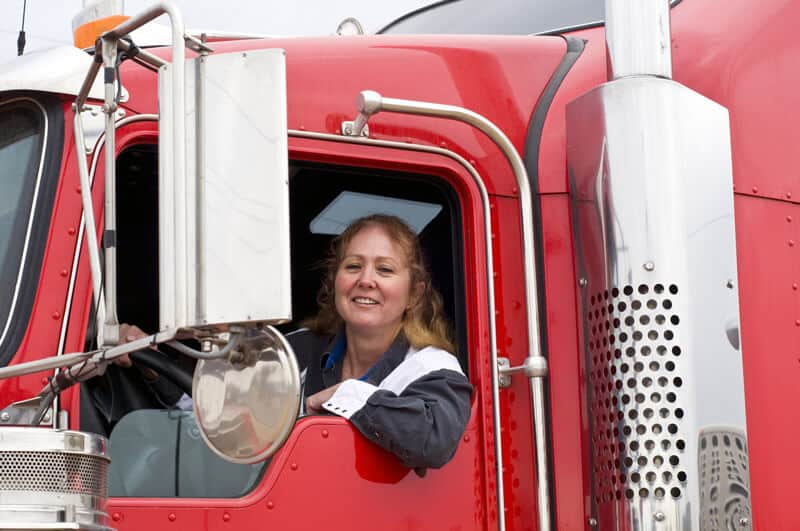
FAA Regulated Employers
Employers regulated by the Federal Aviation Administration (FAA) are required to have a drug and alcohol testing program.
More information for FAA Regulated Employers DOT drug and alcohol testing.

Owner Operators FMCSA
Owner operators of trucks in the United States have a responsibility to comply with DOT and FMCSA regulations for drug and alcohol testing..
Special Programs for Owner Operators DOT drug and alcohol testing.

Private Fleets FMCSA
National Drug Screening specializes in providing a great program for private fleets to be compliant fast and easy.
More information for Private Fleets DOT drug and alcohol testing.

For Hire Carriers FMCSA
National Drug Screening specializes in providing drug and alcohol testing program for ‘For hire carriers’.
More information - For Hire Carriers DOT drug and alcohol testing.

Small Trucking and Bus Companies
Contact National Drug Screening today for a compliant program for small trucking companies and bus companies.
More information for Small Trucking and Bus Companies for DOT drug and alcohol testing.

USCG Drug Test
For Coast Guard regulated employers, National Drug Screening offers complete programs for compliance with Coast Guard regulations for drug and alcohol testing.
More information for USCG Vessels for HIre for DOT drug and alcohol testing.
Is your drug testing program DOT compliant? National Drug Screening provides drug and alcohol testing programs for DOT regulated employees with an emphasis on DOT compliance. Our programs are available nationwide and can easily be ordered online or over the phone.
Every DOT employee must enter a drug testing program and there are certain components necessary to ensure compliance. Our programs are guaranteed to be compliant and will pass an audit. Contact National Drug Screening today to order your DOT drug testing program. Questions? Call 866-843-4545.
What Do DOT Programs Include?
Our DOT compliant programs include the following components:
- Designated Employer Representative (DER)
- Written Policy
- Regulations on File
- Previous Employer Checks
- Employee Education
- Supervisor Training
- Removal of Covered Employees
- Pre-Employment Tests
- Correct Federal Custody & Control Forms (CCF)
- Random Pool
- Post Accident Testing Situations
- Substance Abuse Professional (SAP) Process
- Record Keeping
National Drug Screening specializes in drug and alcohol testing programs for FMCSA owner-operators, private fleets, for hire carriers, small trucking companies, FAA regulated companies, United States Coast Guard and all administrations under the DOT. Random consortium programs and stand alone random testing are both available. Customized DOT drug & alcohol testing policies are written for DOT regulated employers for all of the transportation modes.

Order Now or Call us today to start your DOT program; 866-843-4545
Call today for expert assistance for a DOT audit of your drug and alcohol testing program.
DOT Terms And Definitions
Knowledge of DOT Drug & Alcohol Testing regulations requires an understanding of the terms and definitions.
Adulterated specimen
A specimen that has been altered, as evidenced by test results showing either a substance that is not a normal constituent for that type of specimen or showing an abnormal concentration of an endogenous substance.
Affiliate
Persons are affiliates of one another if, directly or indirectly, one controls or has the power to control the other, or a third party controls or has the power to control both. Indicators of control include, but are not limited to: interlocking management or ownership; shared interest among family members; shared facilities or equipment; or common use of employees. Following the issuance of a public interest exclusion, an organization having the same or similar management, ownership, or principal employees as the service agent concerning whom a public interest exclusion is in effect is regarded as an affiliate. This definition is used in connection with the public interest exclusion procedures of Subpart R of this part.
Air blank
In evidential breath testing devices (EBTs) using gas chromatography technology, a reading of the device’s internal standard. In all other EBTs, a reading of ambient air containing no alcohol.
Alcohol
The intoxicating agent in beverage alcohol, ethyl alcohol or other low molecular weight alcohols, including methyl or isopropyl alcohol.
Alcohol concentration
The alcohol in a volume of breath expressed in terms of grams of alcohol per 210 liters of breath as indicated by a breath test under this part.
Alcohol confirmation test
A subsequent test using an EBT, following a screening test with a result of 0.02 or greater, that provides quantitative data about the alcohol concentration.
Alcohol screening device (ASD)
IA breathe or saliva device, other than an EBT, that is approved by the National Highway Traffic Safety Administration (NHTSA) and placed on a conforming products list (CPL) for such devices.
Alcohol screening test
An analytic procedure to determine whether an employee may have a prohibited concentration of alcohol in a breath or saliva specimen.
Alcohol testing site
A place selected by the employer where employees present themselves for the purpose of providing breath or saliva for an alcohol test.
Alcohol Use
The drinking or swallowing of any beverage, liquid mixture or preparation (including any medication), containing alcohol.
Aliquot
A fractional part of a specimen used for testing. It is taken as a sample representing the whole specimen.
Blind specimen or blind performance test specimen
No longer required for DOT drug testing.
Breath Alcohol Technician (BAT)
A person who instructs and assists employees in the alcohol testing process and operates an evidential breath testing device.
Canceled test
A drug or alcohol test that has a problem identified that cannot be or has not been corrected, or which this part otherwise requires to be canceled. A canceled test is neither a positive nor a negative test.
Chain of custody
The procedure used to document the handling of the urine specimen from the time the employee gives the specimen to the collector until the specimen is destroyed. This procedure uses the Federal Drug Testing Custody and Control Form (CCF) as approved by the Office of Management and Budget.
Collection container
A container into which the employee urinates to provide the specimen for a drug test.
Collection site
A place selected by the employer where employees present themselves for the purpose of providing a urine specimen for a drug test.
Collector
A person who instructs and assists employees at a collection site, who receives and makes an initial inspection of the specimen provided by those employees, and who initiates and completes the CCF.
Confirmatory drug test
A second analytical procedure performed on a different aliquot of the original specimen to identify and quantify the presence of a specific drug or drug metabolite.
Confirmatory validity test
A second test performed on a different aliquot of the original urine specimen to further support a valid test result.
Confirmed drug test
A confirmation test result received by an MRO from a laboratory.
Consortium/Third-party administrator (C/TPA)
A service agent that provides or coordinates the provision of a variety of drug and alcohol testing services to employers. C/TPAs typically perform administrative tasks concerning the operation of the employers’ drug and alcohol testing programs. This term includes, but is not limited to, groups of employers who join together to administer, as a single entity, the DOT drug and alcohol testing programs of its members. C/TPAs are not “employers” for purposes of this part.
Continuing education
Training for substance abuse professionals (SAPs) who have completed qualification training and are performing SAP functions, designed to keep SAPs current on changes and developments in the DOT drug and alcohol testing program.
Designated employer representative (DER)
An employee authorized by the employer to take immediate action(s) to remove employees from safety-sensitive duties, or cause employees to be removed from these covered duties, and to make required decisions in the testing and evaluation processes. The DER also receives test results and other communications for the employer, consistent with the requirements of this part. Service agents cannot act as DERs.
Dilute specimen
A urine specimen with creatinine and specific gravity values that are lower than expected for human urine.
DOT, The Department, DOT agency
These terms encompass all DOT agencies, including, but not limited to, the United States Coast Guard (USCG), the Federal Aviation Administration (FAA), the Federal Railroad Administration (FRA), the Federal Motor Carrier Safety Administration (FMCSA), the Federal Transit Administration (FTA), the National Highway Traffic Safety Administration (NHTSA), the Pipeline and Hazardous Materials Safety Administration (PHMSA), and the Office of the Secretary (OST). These terms include any designee of a DOT agency.
Drugs
The drugs for which tests are required under this part and DOT agency regulations are marijuana, cocaine, amphetamines, phencyclidine (PCP), and opiates.
Employee
Any person who is designated in a DOT agency regulation as subject to drug testing and/or alcohol testing. The term includes individuals currently performing safety-sensitive functions designated in DOT agency regulations and applicants for employment subject to pre-employment testing. For purposes of drug testing under this part, the term employee has the same meaning as the term “donor” as found on CCF and related guidance materials produced by the Department of Health and Human Services.
Employer
A person or entity employing one or more employees (including an individual who is self-employed) subject to DOT agency regulations requiring compliance with this part. The term includes an employer’s officers, representatives, and management personnel. Service agents are not employers for the purposes of this part.
Error Correction Training
Training provided to BATs, collectors, and screening test technicians (STTs) following an error that resulted in the cancellation of a drug or alcohol test. Error correction training must be provided in person or by a means that provides real-time observation and interaction between the instructor and trainee.
Evidential Breath Testing Device (EBT)
A device approved by NHTSA for the evidential testing of breath at the .02 and .04 alcohol concentrations, placed on NHTSA’s Conforming Products List (CPL) for “Evidential Breath Measurement Devices” and identified on the CPL as conforming with the model specifications available from NHTSA’s Traffic Safety Program.
HHS
The Department of Health and Human Services or any designee of the Secretary, Department of Health and Human Services.
Initial drug test (also known as a Screening drug test)
The test used to differentiate a negative specimen from one that requires further testing for drugs or drug metabolites.
Initial specimen validity test
The first test used to determine if a urine specimen is adulterated, diluted, substituted, or invalid.
Invalid drug test
The result reported by an HHS-certified laboratory in accordance with the criteria established by HHS Mandatory Guidelines when a positive, negative, adulterated, or substituted result cannot be established for a specific drug or specimen validity test.
Laboratory
Any U.S. laboratory certified by HHS under the National Laboratory Certification Program as meeting the minimum standards of Subpart C of the HHS Mandatory Guidelines for Federal Workplace Drug Testing Programs; or, in the case of foreign laboratories, a laboratory approved for participation by DOT under this part.
Limit of Detection (LOD)
The lowest concentration at which a measurand can be identified, but (for quantitative assays) the concentration cannot be accurately calculated.
Limit of Quantitation
For quantitative assays, the lowest concentration at which the identity and concentration of the measurand can be accurately established.
Medical Review Officer (MRO)
A person who is a licensed physician and who is responsible for receiving and reviewing laboratory results generated by an employer’s drug testing program and evaluating medical explanations for certain drug test results.
Negative result
The result reported by an HHS-certified laboratory to an MRO when a specimen contains no drug or the concentration of the drug is less than the cutoff concentration for the drug or drug class and the specimen is a valid specimen.
Non-negative specimen
A urine specimen that is reported as adulterated, substituted, positive (for drug(s) or drug metabolite(s)), and/or invalid.
Office of Drug and Alcohol Policy and Compliance (ODAPC)
The office in the Office of the Secretary, DOT, that is responsible for coordinating drug and alcohol testing program matters within the Department and providing information concerning the implementation of this part.
Oxidizing adulterant
A substance that acts alone or in combination with other substances to oxidize drugs or drug metabolites to prevent the detection of the drug or drug metabolites, or affects the reagents in either the initial or confirmatory drug test.
Positive result
The result reported by an HHS-certified laboratory when a specimen contains a drug or drug metabolite equal to or greater than the cutoff concentrations.
Primary specimen
In drug testing, the urine specimen bottle that is opened and tested by a first laboratory to determine whether the employee has a drug or drug metabolite in his or her system; and for the purpose of validity testing. The primary specimen is distinguished from the split specimen, defined in this section.
Qualification Training
The training required in order for a collector, BAT, MRO, SAP, or STT to be qualified to perform their functions in the DOT drug and alcohol testing program. Qualification training may be provided by any appropriate means (e.g., classroom instruction, internet application, CD–ROM, video).
Reconfirmed
The result reported for a split specimen when the second laboratory is able to corroborate the original result reported for the primary specimen.
Refresher Training
The training required periodically for qualified collectors, BATs, and STTs to review basic requirements and provide instruction concerning changes in technology (e.g., new testing methods that may be authorized) and amendments, interpretations, guidance, and issues concerning this part and DOT agency drug and alcohol testing regulations. Refresher training can be provided by any appropriate means (e.g., classroom instruction, internet application, CD–ROM, video).
Rejected for testing
The result reported by an HHS-certified laboratory when no tests are performed for a specimen because of a fatal flaw or a correctable flaw that is not corrected.
Screening Drug Test
See Initial drug test definition above.
Screening Test Technician (STT)
A person who instructs and assists employees in the alcohol testing process and operates an ASD.
Secretary
The Secretary of Transportation or the Secretary’s designee.
Service agent
Any person or entity, other than an employee of the employer, who provides services to employers and/or employees in connection with DOT drug and alcohol testing requirements. This includes, but is not limited to, collectors, BATs and STTs, laboratories, MROs, substance abuse professionals, and C/TPAs. To act as service agents, persons and organizations must meet DOT qualifications, if applicable. Service agents are not employers for purposes of this part.
Shipping container
A container that is used for transporting and protecting urine specimen bottles and associated documents from the collection site to the laboratory.
Specimen bottle
The bottle that, after being sealed and labeled according to the procedures in this part, is used to hold the urine specimen during transportation to the laboratory.
Split specimen
In drug testing, a part of the urine specimen that is sent to a first laboratory and retained unopened, and which is transported to a second laboratory in the event that the employee requests that it be tested following a verified positive test of the primary specimen or a verified adulterated or substituted test result.
Split specimen collection
A collection in which the urine collected is divided into two separate specimen bottles, the primary specimen (Bottle A) and the split specimen (Bottle B).
Stand-down
The practice of temporarily removing an employee from the performance of safety-sensitive functions based only on a report from a laboratory to the MRO of a confirmed positive test for a drug or drug metabolite, an adulterated test, or a substituted test, before the MRO has completed verification of the test result.
Substance Abuse Professional (SAP)
A person who evaluates employees who have violated a DOT drug and alcohol regulation and makes recommendations concerning education, treatment, follow-up testing, and aftercare.
Substituted specimen
A urine specimen with creatinine and specific gravity values that are so diminished or so divergent that they are not consistent with normal human urine.
Verified test
A drug test result or validity testing result from an HHS-certified laboratory that has undergone review and final determination by the MRO.






